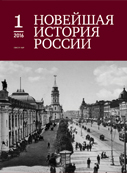Экологическая обстановка в губернских (областных) центрах России и городское хозяйство в XX в. (по материалам Пензы, Рязани и Тамбова)
The Environmental Situation in the Provincial (Regional) Centers in Russia and the Urban Economy in the 20th Century (by the Materials of Penza, Ryazan, and Tambov)
Author(s): A. Yu. Ilyin, Valery Vladimirovich KanischevSubject(s): History, Economic history, Post-War period (1950 - 1989)
Published by: Издательство Исторического факультета СПбГУ
Keywords: environmental history; urban history; anthropogenic and technogenic load on the natural environment; city services; protection of nature
Summary/Abstract: The authors identify two main stages in the environmental history of typical regional capitals of Russia. The first is called sanitary-ecological stage. It was a continuation of the development is not yet obsolete by the beginning of 20th century features of traditional agricultural city. Its main characteristic was the depletion of traditional natural environment on (almost complete felling of the forests within the city limits, the shallowing of the rivers that flowed through the city), the pollution of urban areas waste long continuing agricultural production within the city limits, as well as household waste. A special test of strength for the city services have been the circumstances of the periods of the First World War, the Civil war and the Great Patriotic war. These circumstances revealed insufficient capacity of city services to sustain in the extreme conditions of normal sanitary conditions. The second stage is called technogenic-ecological stage. The main manifestation of the negative impact of human society on the environment was the pollution of the cities not only industrial emissions, but also waste of city services (thermal power enterprises, urban transport, sewerage, etc.). The article emphasizes that in cities like Penza, Ryazan, Tambov the first period lasted until the 1960-s. In 1960–1980-ies were dominant anthropogenic pressures of industry and city services. In the 1990-s, with the decline of industrial production the biggest environmental problems generated in the enterprises of city services. At the end of 20th century there appeared new means of control over urban environment. Such funds as would have stressed the urgency of ecological problems, historic medium-sized Russian cities, which combined the remnants of traditional pre-industrial nature exploitation and the contradictions of contemporary urbanization.
Journal: Новейшая история России
- Issue Year: 6/2016
- Issue No: 15
- Page Range: 146-163
- Page Count: 18
- Language: Russian

